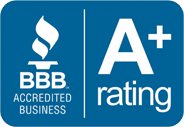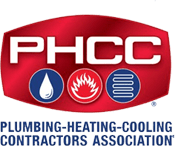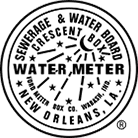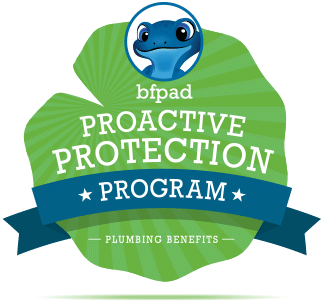
Backflow Preventers: What Are They and Why You Need One
Backflow Preventers – Have you ever wondered how clean water remains uncontaminated as it flows through your home?
The answer lies in a small but crucial device known as a backflow preventer. A backflow preventer is a valve that ensures water flows in one direction, preventing any unwanted reversal that could lead to contamination of the clean water supply.
Backflow preventers are essential components in plumbing systems. They act as gatekeepers, ensuring that once water enters your pipes, it only moves forward. This simple mechanism is vital in maintaining the safety and purity of our drinking water.
Importance of Backflow Prevention
Why is backflow prevention so critical?
Imagine turning on your tap and finding the water is discolored, smells bad, or tastes odd. This scenario could be a reality without backflow prevention. Contaminants from various sources, such as pesticides, chemicals, and bacteria, could enter the clean water supply, posing severe health risks.
Backflow preventers safeguard public health by blocking potential contaminants from reversing into the potable water system. They are not just a convenience but a necessity for maintaining the quality and safety of our drinking water. Their importance is underscored by stringent regulations and standards set by health and safety authorities, making them mandatory in many plumbing systems.
How Does Backflow Occur?
Explanation of Backflow
Backflow occurs when the normal direction of water flow in a plumbing system reverses. Instead of water flowing cleanly from the supply to the tap, it flows backward, potentially bringing contaminants with it. This reversal can lead to serious health risks if pollutants enter the potable water supply.
Causes of Backflow
- Improper Pipe Sizing: Using pipes that are not appropriately sized for the water system can cause pressure imbalances, leading to backflow.
- Reverse Pressure: This happens when the pressure in the downstream system becomes greater than the supply pressure. It can occur due to a pump failure or a fire-fighting effort that draws large amounts of water, causing a reversal of flow.
- Sudden Dips in Water Pressure: Sudden drops in water pressure, like those caused by main breaks or heavy water use, can create a vacuum effect that pulls contaminants into the clean water supply.
- Temperature Changes: Extreme temperature changes can cause water to expand or contract, leading to pressure changes that might cause backflow.
Understanding these causes highlights the need for reliable backflow prevention methods. By addressing these potential issues, we can ensure our water supply remains clean and safe.
Types of Backflow Preventers
Atmospheric Vacuum Breakers (AVBs)
Atmospheric Vacuum Breakers, or AVBs, are one of the simplest and most common types of backflow preventers. They consist of a check valve and an air inlet valve, which opens to break the vacuum when water flow stops, preventing back-siphonage. AVBs are typically used in low-risk applications like garden hoses and irrigation systems.
Pressure Vacuum Breakers (PVBs)
Pressure Vacuum Breakers are more advanced than AVBs. They feature a spring-loaded valve that opens when the internal pressure drops below atmospheric pressure, allowing air to enter and prevent backflow. PVBs are suitable for both residential and commercial applications and are often used in irrigation systems and other moderate-risk scenarios.
Reduced Pressure Zone Assemblies (RPZs)
Reduced Pressure Zone Assemblies are the most reliable and versatile type of backflow preventer. They consist of two independent check valves and a pressure relief valve located between them. If either check valve fails, the pressure relief valve will open, discharging water and maintaining the barrier against backflow. RPZs are used in high-risk applications, such as commercial kitchens and medical facilities, where preventing contamination is crucial.
Double Check Valve Assemblies (DCVAs)
Double Check Valve Assemblies are similar to RPZs but without the pressure relief valve. They consist of two check valves in series, providing a double layer of protection against backflow. DCVAs are commonly used in fire sprinkler systems, residential plumbing, and other applications where the risk of contamination is moderate.
Each type of backflow preventer has its specific applications and benefits. Understanding the differences can help in selecting the right one for your needs, ensuring the safety and purity of your water supply.
How Backflow Preventers Work
Mechanism of Each Type
Atmospheric Vacuum Breakers (AVBs): AVBs operate using a simple mechanism. When water flows through the device, a check valve remains open. When the flow stops, the check valve closes, and an air inlet valve opens. This allows air to enter the system, breaking the vacuum and preventing back-siphonage.
Pressure Vacuum Breakers (PVBs): PVBs are equipped with a spring-loaded valve. When water pressure inside the device drops below the atmospheric pressure, the valve opens, allowing air to enter and preventing backflow. This mechanism ensures a reliable barrier against back-siphonage.
Reduced Pressure Zone Assemblies (RPZs): RPZs have a more complex mechanism. They contain two check valves and a pressure relief valve between them. If the pressure between the two check valves drops, the relief valve opens, discharging water and preventing backflow. This triple protection makes RPZs highly reliable for high-risk applications.
Double Check Valve Assemblies (DCVAs): DCVAs consist of two check valves in series. If the first check valve fails, the second one provides a backup, ensuring that backflow is prevented. This simple yet effective mechanism makes DCVAs suitable for medium-risk scenarios.
Differences in Functionality and Application
Functionality: The primary difference in functionality lies in the complexity and redundancy of the mechanisms. AVBs and PVBs primarily prevent back-siphonage, while RPZs and DCVAs provide broader protection against both back-siphonage and backpressure. RPZs are the most robust, with a pressure relief valve providing an additional layer of safety.
Application: The choice of backflow preventer depends on the risk level and specific requirements of the application. AVBs and PVBs are suitable for residential irrigation systems and other low to moderate-risk applications.
RPZs are essential for high-risk environments like hospitals and restaurants, where contamination prevention is critical. DCVAs are versatile and used in residential plumbing and fire sprinkler systems.
Understanding how each type of backflow preventer works and their appropriate applications ensures the right choice for maintaining water safety and compliance with regulations.
Benefits of Installing Backflow Preventers
Health and Safety Benefits
Installing backflow preventers is crucial for maintaining the health and safety of your household. These devices stop contaminants from entering the clean water supply. Without a backflow preventer, harmful substances like pesticides, chemicals, and bacteria can infiltrate your drinking water. This could lead to severe health issues, including gastrointestinal diseases, infections, and poisoning.
Backflow preventers act as a shield, ensuring that your water remains pure and safe for consumption. They are particularly vital in areas with older plumbing systems where the risk of backflow is higher.
Legal Requirements and Compliance
Backflow prevention is not just about safety; it’s also a legal requirement. Many local and national regulations mandate the installation of backflow preventers in specific settings. Non-compliance can lead to hefty fines and legal actions.
For instance, commercial establishments like restaurants and hospitals are required to have backflow prevention systems in place to protect public health.
Compliance with these regulations ensures that you are following the law and protecting your community’s water supply. Regular inspections and maintenance of these devices are also required by law to ensure they are functioning correctly.
Protection of Plumbing Systems
Backflow can cause significant damage to your plumbing system. Contaminants that enter your pipes can cause corrosion and blockages, leading to costly repairs. Installing backflow preventers helps protect your entire plumbing system from such damage.
These devices ensure that water flows only in the intended direction, maintaining the integrity of your pipes and reducing the likelihood of costly plumbing issues. By investing in a backflow preventer, you are safeguarding your home’s infrastructure and avoiding unexpected repair bills.
Why You Need a Backflow Preventer
Preventing Contamination
Contaminated water can pose serious health risks. A backflow preventer is essential to ensure your water supply remains clean. Without it, pollutants from various sources can enter your home’s water system, leading to potential health hazards.
Backflow can introduce harmful substances like pesticides, fertilizers, bacteria, and chemicals into the potable water supply. By installing a backflow preventer, you create a barrier that stops these contaminants from entering your drinking water, thus ensuring the safety and health of everyone in your household.
Protecting Water Quality in Algiers, LA, and Timberlane, LA
In areas like Algiers, LA, and Timberlane, LA, maintaining high water quality is crucial. Local environments can have unique challenges that affect water systems, such as varying pressure levels and aging infrastructure. Backflow preventers are especially important in these areas to combat specific local issues.
By installing these devices, residents in Algiers and Timberlane can protect their water from contamination and ensure that it meets health standards. This is not just about following regulations but also about safeguarding the community’s health and well-being.
Avoiding Legal and Financial Consequences
Failure to install a backflow preventer can lead to severe legal and financial repercussions. Many municipalities, including those in Algiers, LA, and Timberlane, LA, have strict regulations regarding backflow prevention. Non-compliance can result in fines, legal action, and even service termination.
Additionally, if contamination occurs due to negligence, property owners could face significant liability issues. The cost of installing and maintaining a backflow preventer is far less than potential legal fees, fines, and the expense of repairing contaminated water systems. Ensuring compliance with local regulations not only protects your water but also shields you from costly consequences.
Choosing the Right Backflow Preventer for Your Home
Factors to Consider
- Property Type: The type of property you own significantly influences the choice of backflow preventer. Residential properties, commercial buildings, and industrial facilities each have different requirements. For instance, residential properties might need a simple AVB, while commercial properties might require a more robust RPZ.
- Local Regulations: Local building codes and regulations are critical when choosing a backflow preventer. Regulations in areas like Algiers, LA, and Timberlane, LA, can dictate specific requirements for backflow prevention systems. Always check with local authorities to ensure compliance and avoid potential fines.
- Risk Level: Assess the risk level of potential contamination in your water system. High-risk areas, such as those with irrigation systems or swimming pools, may need more advanced preventers like RPZs. For lower-risk areas, a DCVA might suffice.
- Water Usage Patterns: Consider your water usage patterns. Properties with high water demand might need a more sophisticated system to handle pressure fluctuations effectively.
Professional Consultation and Installation
Consulting with a professional plumber is crucial in selecting the right backflow preventer. Professionals can assess your property’s specific needs, evaluate local regulations, and recommend the most suitable device. They have the expertise to ensure the installation meets all safety standards and functions correctly.
Professional installation also ensures that the device is correctly positioned and tested. Incorrect installation can render a backflow preventer ineffective, leaving your water supply vulnerable to contamination. Investing in professional consultation and installation not only guarantees compliance but also provides peace of mind knowing that your water system is secure.
Installation of Backflow Preventers
DIY vs. Professional Installation
When it comes to installing a backflow preventer, you might wonder whether to do it yourself or hire a professional. DIY installation can be tempting to save costs, especially for simpler devices like AVBs. However, improper installation can lead to system failures and water contamination.
DIY Installation: If you have basic plumbing skills and the installation is straightforward, such as for an AVB, you might handle it yourself. Always follow manufacturer instructions carefully and ensure all connections are secure.
Professional Installation: For more complex systems, like RPZs or DCVAs, professional installation is highly recommended. Professionals ensure the device is correctly installed, tested, and complies with local regulations. They also perform pressure testing and ensure all components function properly.
Step-by-Step Guide for AVBs and Simple Installations
- Turn Off Water Supply: Before starting, turn off the main water supply to avoid any leakage.
- Identify Installation Point: Choose the appropriate location, usually just downstream of the potential backflow source.
- Prepare the Pipes: Clean the pipes and cut them to fit the backflow preventer. Ensure the ends are smooth and debris-free.
- Install the AVB: Attach the AVB to the pipes using appropriate fittings. Ensure it is installed in a vertical position as required.
- Secure Connections: Use Teflon tape on threaded connections and tighten all fittings securely to prevent leaks.
- Turn On Water Supply: Slowly turn on the water supply and check for leaks. Make sure the AVB functions correctly by observing the air inlet valve.
Maintenance and Testing of Backflow Preventers
Regular Inspection Requirements
Maintaining a backflow preventer is essential to ensure it functions correctly and continues to protect your water supply. Regular inspections are necessary and, in many places, mandated by local regulations.
Inspections should be conducted at least annually by a certified professional. During these inspections, the professional will check for signs of wear and tear, leaks, and other potential issues that could impair the device’s effectiveness.
Testing Procedures and Frequency
Annual Testing: Most local authorities require annual testing of backflow preventers. This ensures that the device is working correctly and can respond effectively to changes in water pressure. A certified tester will perform a series of checks, including verifying the operation of check valves and relief valves.
Interim Testing: Depending on the environment and usage, some systems might need more frequent testing. For example, areas with high water pressure fluctuations or chemical usage might require semi-annual or quarterly testing.
Testing Procedure:
- Visual Inspection: Check for visible damage or leaks.
- Pressure Test: Use a differential pressure gauge to test the pressure levels across the check valves.
- Operational Test: Ensure that the relief valves open and close correctly under simulated backflow conditions.
- Documentation: Record the results of the tests and any maintenance performed.
Common Applications of Backflow Preventers
Residential Uses
- Irrigation Systems: In residential settings, backflow preventers are often used in irrigation systems to prevent fertilizers, pesticides, and other chemicals from contaminating the potable water supply. Devices like AVBs and PVBs are common in these systems due to their effectiveness and ease of installation.
- Swimming Pools: Swimming pools can be a significant source of backflow contamination if chemicals like chlorine or pool water itself siphon back into the main water supply. Installing a backflow preventer ensures that these contaminants do not enter your drinking water system.
- Water Wells: For homes that use private wells, backflow prevention is crucial. Contaminants from the well can easily flow back into the potable water system, especially during periods of low water pressure. Backflow preventers help maintain water quality and safety.
Commercial and Industrial Applications
- Restaurants and Food Services: In commercial kitchens, backflow preventers are essential to prevent contaminated water from dishwashers, sinks, and other appliances from entering the clean water supply. RPZs are commonly used due to their high level of protection.
- Medical Facilities: Hospitals and clinics require stringent water quality controls to protect patients and staff. Backflow preventers in medical settings prevent contaminants from procedures and cleaning processes from compromising the water supply.
- Manufacturing Plants: Industrial facilities often use chemicals and other hazardous materials in their processes. Backflow preventers in these environments ensure that these substances do not enter the public water supply, protecting both the facility and the surrounding community.
Backflow preventers are used in various settings to protect water quality and prevent contamination. Whether in a home, a restaurant, or an industrial plant, these devices play a crucial role in maintaining the safety and integrity of the water supply.
FAQs About Backflow Preventers
- What is a backflow preventer?
A backflow preventer is a device installed in plumbing systems to prevent contaminated water from flowing backward into the clean water supply. It ensures water flows in only one direction, maintaining the safety and purity of drinking water.
- How often should a backflow preventer be tested?
Most backflow preventers should be tested annually by a certified professional. However, depending on the local regulations and the specific use case, some systems may require more frequent testing.
- Can I install a backflow preventer myself?
While some simple devices like Atmospheric Vacuum Breakers (AVBs) can be installed by a homeowner with basic plumbing skills, it is recommended to have more complex systems, such as Reduced Pressure Zone Assemblies (RPZs), installed by a professional to ensure proper functionality and compliance with local regulations.
- What are the signs that a backflow preventer needs maintenance?
Common signs include water leaks, unusual water pressure changes, and the presence of contaminants in the water supply. Regular inspections can help identify these issues early and prevent potential contamination.
- Why is backflow prevention important in Algiers, LA, and Timberlane, LA?
Backflow prevention is crucial in these areas due to local environmental factors and aging infrastructure. Ensuring the installation of proper backflow preventers helps maintain high water quality and compliance with local health and safety regulations, protecting the community’s health.
By understanding the types, functions, and benefits of backflow preventers, you can make informed decisions to protect your water quality. Remember, investing in a reliable backflow preventer not only protects your home and health but also helps avoid legal and financial repercussions.
Do you have any questions or additional thoughts on backflow preventers? Share your experiences or concerns in the comments below!













